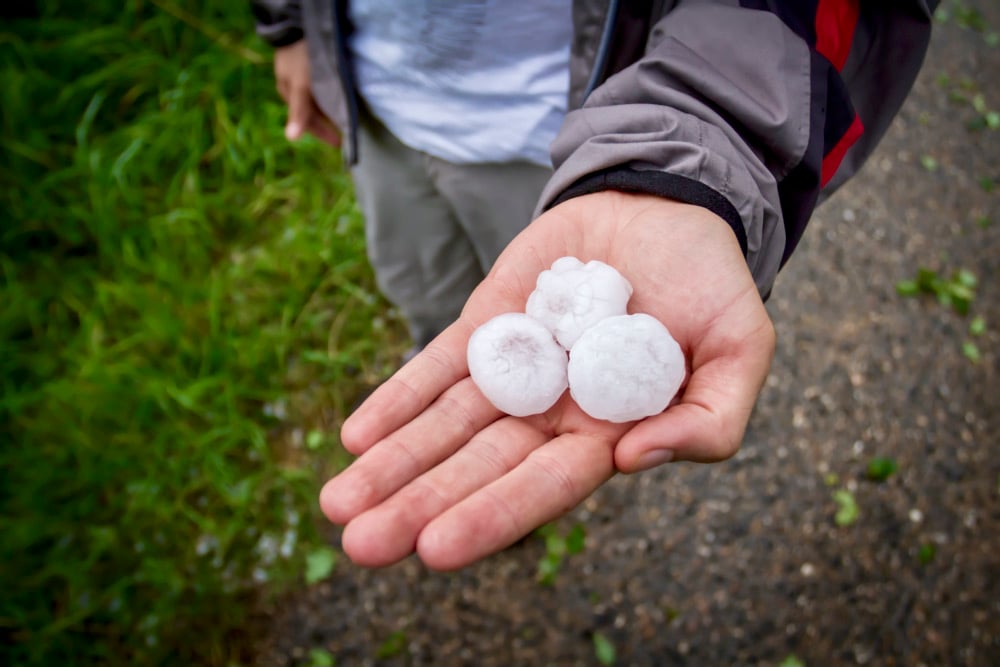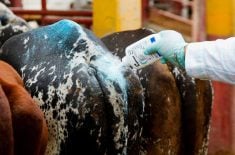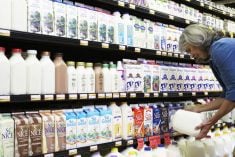The cost of E.coli is enormous, yet almost impossible to tally.
It’s difficult to calculate the lost demand for beef. It’s hard to know how many consumers pause in front of retail beef displays before moving on to choose chicken or pork instead.
Kevin Grier, market analyst with the George Morris Centre said it is almost impossible to assess market losses through declining consumer consumption.
Sixteen people across Canada have become sick from E. coli bacteria that originated from XL Foods’ plants in Brooks, Alta.
Read Also

Mixed year for hail claims across Prairies: CCHA
The 2025 crop year was an average year for hail across the Canadian Prairies, with overall claim numbers down slightly compared to last year, reported the Canadian Crop Hail Association (CCHA).
As well, the cost of recalled and destroyed beef has been staggering, said Grier.
“In this case it is off the charts compared to ‘normal,’ although there is not normal,” wrote Grier in an e-mail.
Grier estimated the impact on the cattle futures market could be $100 million a year as traders sell on recall news.
Last week, CFIA officials said 12 million pounds of fresh or frozen meat processed at the XL plant before the recall could not be sold to consumers because of the possibility of improper quality control testing before the plant was shut down. The mostly steaks, roasts and tenderloins, with a value of at least $50 million will have to be land filled, rendered or retested and cooked.
The meat, which is mostly primal cuts, and highly unlikely to have E. coli will start arriving at landfills this week.
Future lawsuits could also drive up costs.
Sven Anders, assistant professor in the department of rural economy at the University of Alberta said XL will likely face lawsuits from broken contracts with retailers in Canada and overseas because of its inability to fill production contracts.
“I am sure there are lawyers thinking of ways to extract money from a company that will soon no longer be in business,” said Anders, of Edmonton.
Dr. Harpreet Kochhar, executive director of the Canadian Food Inspection Agency’s western operations, said the millions of dollars worth of products recalled since CFIA began its investigation, or meat shipped back from nervous retailers will also be rendered or landfilled.
Steve Kay, editor of Cattle Buyers Weekly estimates XL Foods has lost 52 million pounds, or about $75 million to $100 million in lost production since the plant shut down.
“This means the end of Nilsson’s in the meat packing business,” said Kay of Petaluma, Ca.
Three crucial things occurred to force XL Foods to strike a tentative agreement to sell its beef packing plants and feedlots to the world’s largest meat processor JBS, said Kay.
“They stopped production. That’s a killer. There was returned product and lost customers and they couldn’t get on side with CFIA to get up and running. The whole issue became very politicized.”
Paul Mayer, associate vice-president of programs with CFIA said they are not responsible for the demise of XL, but their decisions are based on looking out for Canadian’s health.
“We are not going to speculate on how XL led itself to the partnership its taken with JBS,” said Mayer in a conference call.
“Our focus is on the protection of consumers. The decisions we make are based on the evidence available to us and the interests of protecting consumers and we will continue to do so.”
Ironically over the past four or five years, food safety standards have risen dramatically in all plants, said Kay.
“Maybe they didn’t rise quite sufficiently at XL, but maybe they just didn’t have the wherewithal to recognize or withstand a sudden surge in food safety problem,” said Kay.
“E.coli can overwhelm a plant. You can be running along hunky dory, all testing showing very low incidents and suddenly you can have a spike out and then it can just get out of control. Unless people are absolutely on top of their game they basically have to stop production and find out what is happening,” he said.
“My thesis is the plant got suddenly overwhelmed by an E.coli storm and didn’t quite know how to deal with it. Nobody gets a warning about an E.coli outbreak.”














